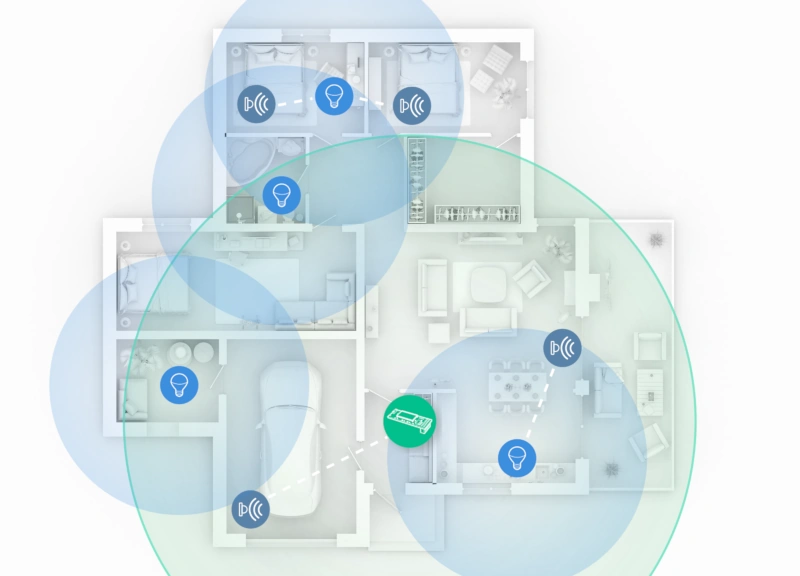 |
| Raspbee in action (credit: phoscon.de) |
Home automation systems tend to be one of two types. Home grown or created and bought from a provider. Either way you're going to end up with a lot of small devices all over the house, but they don't have to be hard to set up and manage. I'm going to focus on what my personal experience is, creating your own custom system from standard parts. So what are all these parts? Here's a list of devices from my house:
Wirelessly controlled actuators (stuff that provides pleasure, convenience, security)
- lightbulbs
- sockets
- mains water valve
- switches
- steering devices
- windows
- bells
Wirelessly sending sensors
- room motion detectors
- window movement detectors
- door movement detectors
- room temperature & humidity
- localised water leak detectors
- water flow meters
- video cameras
Control system
- IoT wireless network (Zigbee & WiFi)
- management servers
- wall tablets (in prep)
- our phones (Android, of course 😎)
I'll go into the gear in more detail with set up, gotchas, tips etc, but for now the list of kit
- Sonoff: Zigbee bridge, inline switches, patress box switches, motion detectors, window/door sensors
- BlitzWolf: water leak sensors, temp/humidity sensors, patress box* switches
- IKEA Tradfri bulbs, motion detectors, LED strip lighting
- Velux: windows and wireless controllers with a hub
- B.E.G. external motion detectors
- Luceco external LED floodlights
- Dresden Elektronik : Zigbee router (Raspbee)
- Raspberry Pi: 2, 3B+
- Various bits of electronic kit and tools to make and modify solutions
* patress box switches make your existing light switches smart. It's a small box that fits behind your switch plate, in the patress box, connected to the electrical wiring safely, that is then permit you to control and sense that
#HomeAssistant #Zigbee #Sonoff #Blitzwolf #Tradfri #Velux #BEG #Phoscon #RaspberryPi
Comments
Post a Comment
Thanks for commenting! Because of so many spam posts, to save us all from them, I've had to regrettably moderate submitted comments. Thanks for your understanding.
Kiat